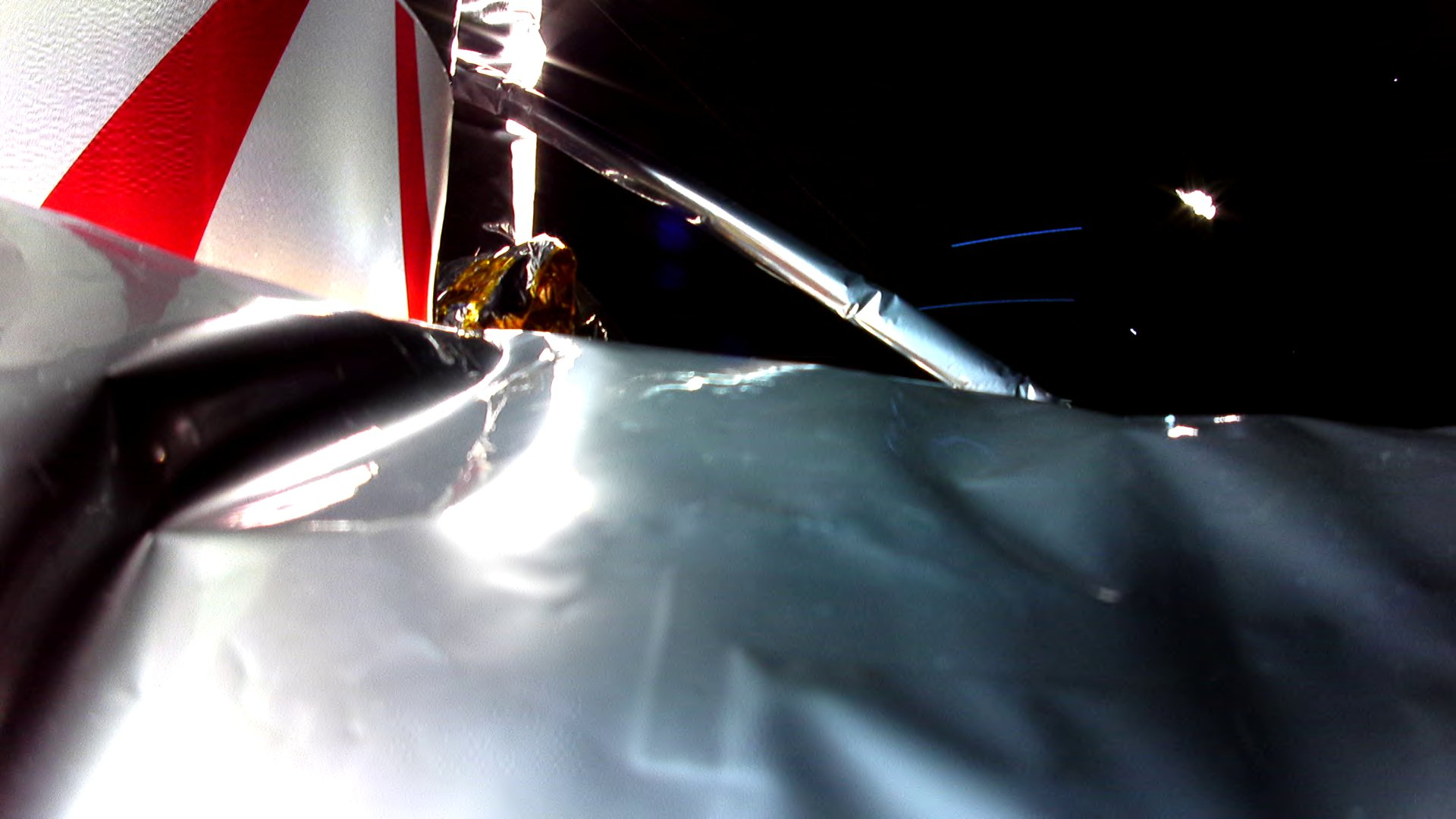Time is running out for stricken Peregrine moon lander after crippling fuel leak
The spacecraft has less than two days of fuel left.
Time is running out on Astrobotic's private Peregrine moon lander after suffering a critical fuel leak shortly after its launch into space early Monday (Jan. 8).
The private U.S. moon lander lifted off Monday during the flawless first launch of United Launch Alliance's brand-new Vulcan Centaur rocket as the booster's primary payload. Hours later, however, Astrobotic reported that its Peregrine moon lander had encountered an anomaly on its way to the moon that prevented it from orienting itself correctly. Several updates followed throughout the day on Monday, including an image taken by the lander while in space in which damaged insulation could be seen on the spacecraft, indicating leak in Peregrine's propulsion system.
"An ongoing propellant leak is causing the spacecraft's Attitude Control System (ACS) thrusters to operate well beyond their expected service life cycles to keep the lander from an uncontrollable tumble," the company wrote in a post on X (formerly Twitter) late Monday (Jan. 8).
The update indicates that the moon is certainly now out of reach for the damaged lunar lander. "If the thrusters can continue to operate, we believe the spacecraft could continue in a stable sun-pointing state for approximately 40 hours, based on current fuel consumption," Astrobotic's update continued. "At this time, the goal is to get Peregrine as close to lunar distance as we can before it loses the ability to maintain its sun-pointing position and subsequently loses power."
Related: 1st photo from crippled private Peregrine moon lander holds clue to anomaly

If Peregrine doesn't reach the moon's surface, which appears to be the likely case given its current predicament, a large suite of scientific experiments and commercial payloads could be lost.
Onboard the lunar lander are 20 payloads for customers, including five science payloads operated by NASA under its Commercial Lunar Payload Services (CLPS) program that were designed to study the moon's surface, atmosphere and radiation environment. Another NASA-led experiment, the Laser Retroreflector Array (LRA), would have placed mirrors on the lunar surface to service as precise distance and location markers. Mexico's space agency also had five miniature autonomous rovers on Peregrine, which were set to carry out the country's first moon mission, and a Carnegie Mellon University has a small student-built Nano Lunar Rover aboard.
Get the Space.com Newsletter
Breaking space news, the latest updates on rocket launches, skywatching events and more!
Some of the commercial payloads include a piece of Mt. Everest, a controversial memorials of human remains and DNA, a miniaturized library, and messages from people around the world. It's unclear what will become of those payloads now that Peregrine appears to be unable of reaching the moon.
Peregrine was set to be the first mission under the CLPS program, which aims to accelerate lunar science by placing NASA-led experiments aboard commercial landers and spacecraft. The next CLPS mission is slated for February, when Houston-based Intuitive Machines launches its Nova-C lander atop a SpaceX Falcon 9 rocket.
Join our Space Forums to keep talking space on the latest missions, night sky and more! And if you have a news tip, correction or comment, let us know at: community@space.com.

Brett is curious about emerging aerospace technologies, alternative launch concepts, military space developments and uncrewed aircraft systems. Brett's work has appeared on Scientific American, The War Zone, Popular Science, the History Channel, Science Discovery and more. Brett has English degrees from Clemson University and the University of North Carolina at Charlotte. In his free time, Brett enjoys skywatching throughout the dark skies of the Appalachian mountains.









